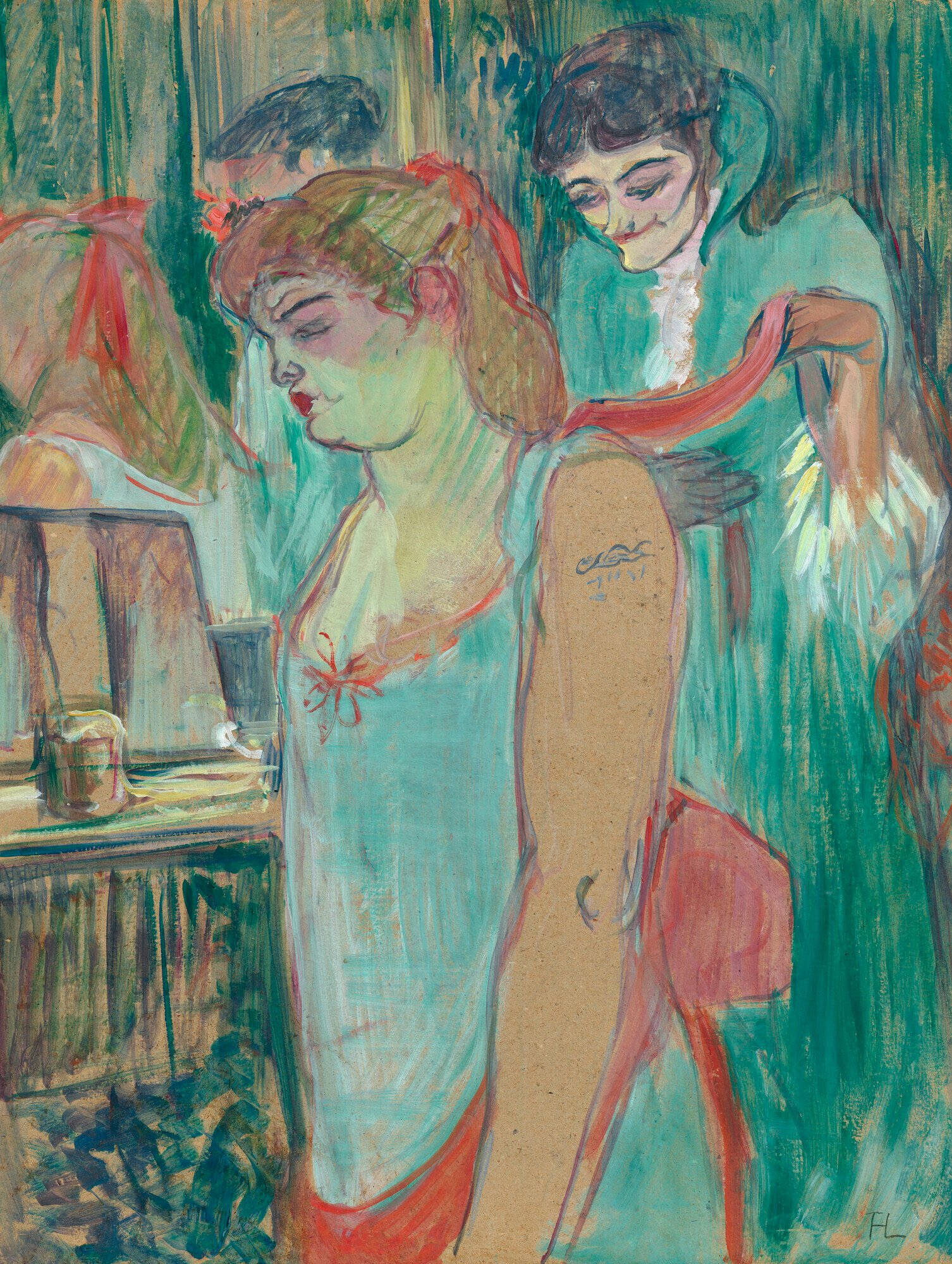
Christie’s will offer La Femme Tatouée (1894) by Henri de Toulouse-Lautrec in its 20th- and 21st-century evening sale in London next month. The painting features a tattooed courtesan being readied for her next client and draws inspiration from Japanese ukiyo-e brothel scenes. Held in a private family collection since 1922, it is estimated at £2.5 million to £3.5 million (about $3.3 million to $4.6 million).
Toulouse-Lautrec was a frequent visitor to les maisons closes—the regulated houses of prostitution in Paris—and his portrayals of sex workers’ lives are considered some of his most moving works. He made around 70 paintings on the theme in the last decade of the 19th century, rendering the women in candid poses with diluted oil paints on cardboard. The Metropolitan Museum in New York has two similar works in its collection, including a tender scene of a lesbian couple called The Sofa (1894–96) and Woman Before a Mirror (1897).
According to Michelle McMullan, the head of Christie’s evening sale for Impressionist and Modern art, the artist’s bordello paintings infrequently come up for sale since many are already held in museums. A majority of works in the series also focus on a singular subject, whereas La Femme Tatouée features a quiet exchange between two women as they help one another dress.
“There is a story unfolding [in this painting], which underscores the real, lived experiences of these women,” McMullan said. She added that it’s “incredibly relevant” to include the work in a sale alongside more modern works of art because Toulouse-Lautrec “was ahead of his time in depicting the individuality of women and the interiority of their lives in his paintings.”
The Sofa by Henri de Toulouse-Lautrec is held in the collection of the Metropolitan Museum of Art in New York.
The artist enjoyed an unusual amount of behind-the-scenes access of his favored maisons closes, often spending time as not only a patron but a friend, having observed and painted the women, along with gossiping and eating meals with them.
Toulouse-Lautrec’s rendering of a tattoo on the arm of the woman in the foreground of La Femme Tatouée shines a light on the then-growing trend for tattoos in Paris through the final decades of the 19th century among both the working class and the fashionable elite. It also recalls Japanese ukiyo-e woodcut prints, which had a large impact on the French avant-garde during this time. (The artist himself became an avid collector of Japanese prints, and began to translate their compositional principles into his own work.)
La Femme Tatouée was likely among the paintings included in Toulouse-Lautrec’s solo exhibition in 1896 at the Galerie Manzi-Joyant. According to reports from the time, the paintings featuring bordello scenes were separated from the rest of the exhibition, hidden in a back room and available for viewing to only a select few, as the artist was anxious about censorship after police removed one of his lesbian pictures from an 1892 show.
Christie’s holds the auction record for Toulouse-Lautrec, having sold La blanchisseuse (1886–87) in 2005 for $22.4 million. One of the last major maisons closes paintings by the artist to come to auction, Le Lit (1898), made $3.66 million at Christie’s in October 2022.